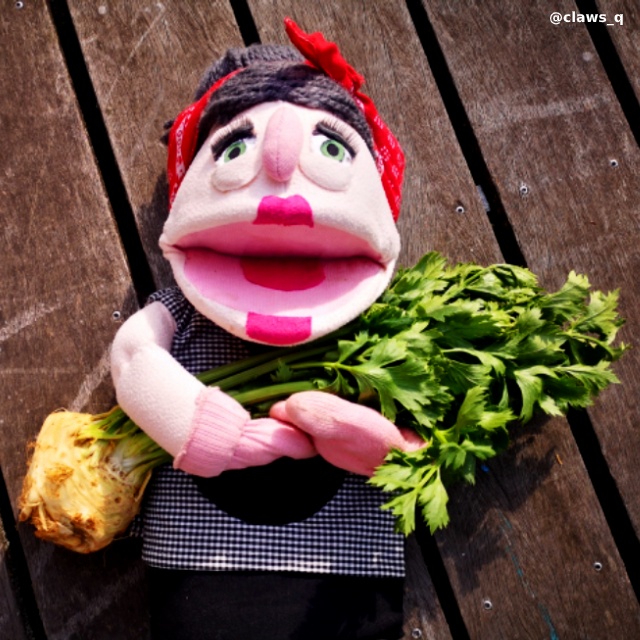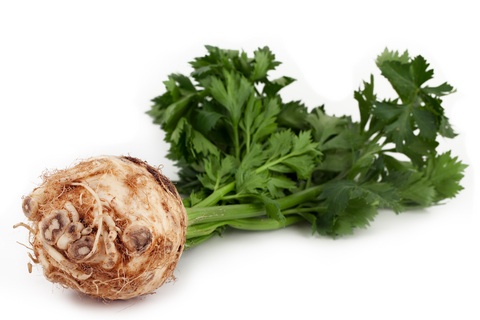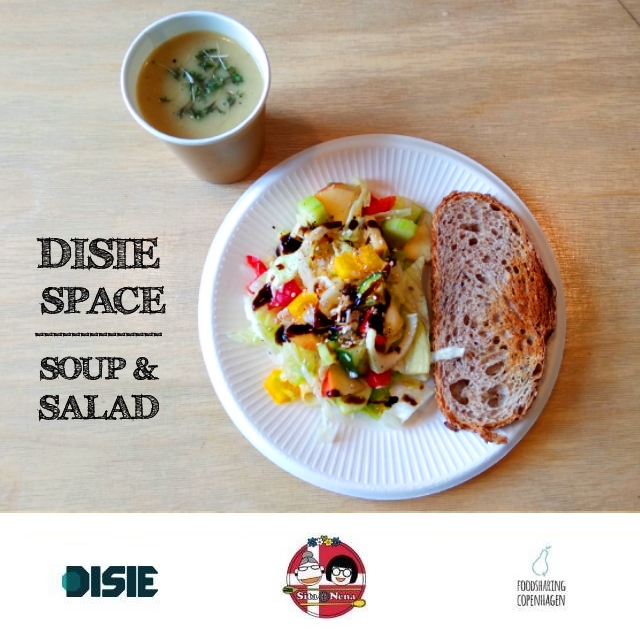Celeriac (Knoldselleri) // Season: ALL YEAR ROUND ❄️🌼☀️🍂

![]()
![]()
![]() Grandma Sita never get bored about delicious CELERIAC (KNOLDSELLERI), root vegetable garnered all-year-round in Denmark. Grandma Sita got some celeriac from LØS market – and ready, set, cook!
Grandma Sita never get bored about delicious CELERIAC (KNOLDSELLERI), root vegetable garnered all-year-round in Denmark. Grandma Sita got some celeriac from LØS market – and ready, set, cook!
![]() Looking to expand your root vegetable knowledge? The Celeriac may be eaten sliced, grated, roasted, stewed, blanched and is especially sublime mashed into potatoes and soups. The exterior of the root is knobby, brown in hue, and must be peeled to reveal the brilliant white interior prior to use.
Looking to expand your root vegetable knowledge? The Celeriac may be eaten sliced, grated, roasted, stewed, blanched and is especially sublime mashed into potatoes and soups. The exterior of the root is knobby, brown in hue, and must be peeled to reveal the brilliant white interior prior to use.
![]() Eating local and seasonal fruit & vegetables helps to reduce food waste, saves resources, improves food quality and healthy habits and boosts the local economy. Win-win!
Eating local and seasonal fruit & vegetables helps to reduce food waste, saves resources, improves food quality and healthy habits and boosts the local economy. Win-win!
📷 by @claws_q

Celeriac (Apium graveolens var. rapaceum), also called celery root, knob celery, and turnip-rooted celery (although it is not a close relative of the turnip), is a variety of celery cultivated for its edible stem or hypocotyl, and shoots. Celeriac is like a root vegetable except it has a bulbous hypocotyl with many small roots attached. Source: wikipedia
- NUTRITION
This root is an excellent source of some of the essential minerals such as phosphorus, iron, calcium, copper, and manganese. Phosphorus is required for cell metabolism, maintaining blood buffer system, bone, and teeth formation. Copper helps restore immunity, prevents anemia, and essential for bone metabolism.
Source: Healthline.com
Nutrition information for major nutrients of 100g of celeriac
|
Calories |
42 |
|
Carbohydrates |
9.20 g |
|
Fiber |
1.8 g |
|
Sugars |
1.5g |
|
Fat |
0.3 g |
|
Protein |
1.5 g |
|
Vitamin A |
20 IU |
|
Vitamin B1 |
0 mg |
|
Vitamin C |
8 mg |
|
Vitamin D |
0 IU |
|
Iron |
0.7 mg |
|
Calcium |
43 mg |
|
Potassium |
300 mg |
- CULTIVATION
The cultivation and harvesting of celeriac occurs primarily in Northern Europe and throughout the Mediterranean Region. Celeriac growing also occurs in North Africa, Siberia, and Southwest Asia and even minimally in North America, where the cultivar ‘Diamant’ is most likely cultivated. The plant is indigenous to the Mediterranean and has long been a popular root veggie in a variety of European cuisines. Celeriac root can be harvested at most any time, but as mentioned is easier to manage when the root is on the smaller side.
Celeriac, Apium graveolens var. rapaceum, is also often referred to as celery root, knob celery, turnip-rooted celery and German celery. Celeriac plants are cool hardy and the root itself has a lengthy storage life of about three to four months, provided it is stored between 32 to 41 F. (0-5 C.) with moist conditions and the foliage removed. Despite being a root veggie, celeriac contains very little starch comparatively, between 5 and 6 percent by weight.
Source: gardeningknowhow.com
- LOCAL PRODUCERS ♻️
Celeriac has maximum flavor after the first frost in the fall and can be allowed to languish in the garden to harvest as needed. There are many local farms and gardens where you can choose and pick celeriac by yourself in Denmark! To find your nearby celeriac garden, please click below:
- USES
The Celeriac, a member of the parsley family (Umbelliferae), may be eaten sliced, grated, roasted, stewed, blanched, mashed. The exterior of the root is knobby, brown in hue, and must be peeled to reveal the brilliant white interior prior to use. Although cultivated for the flavorful root, celeriac plants are a nice addition to the garden with spring green foliage that is predominantly pest resistant.
Source: gardeningknowhow.com
- PLANT-BASED RECIPES🌱
👉🏼 Celeriac soup by Grandma Sita. Check out more delicious soups and salads 😋👉https://lnkd.in/eAQNCr77

- FUN FACT
Although the leaves are edible, celeriac plants are grown for their fairly large root or hypocotyls. Smaller is better in this case, as the larger root tends to become tough and harder to deal with peeling and cutting. The root is used either raw or cooked and tastes much like common garden variety celery stalks with which it shares some lineage.
Source: Wikipedia
